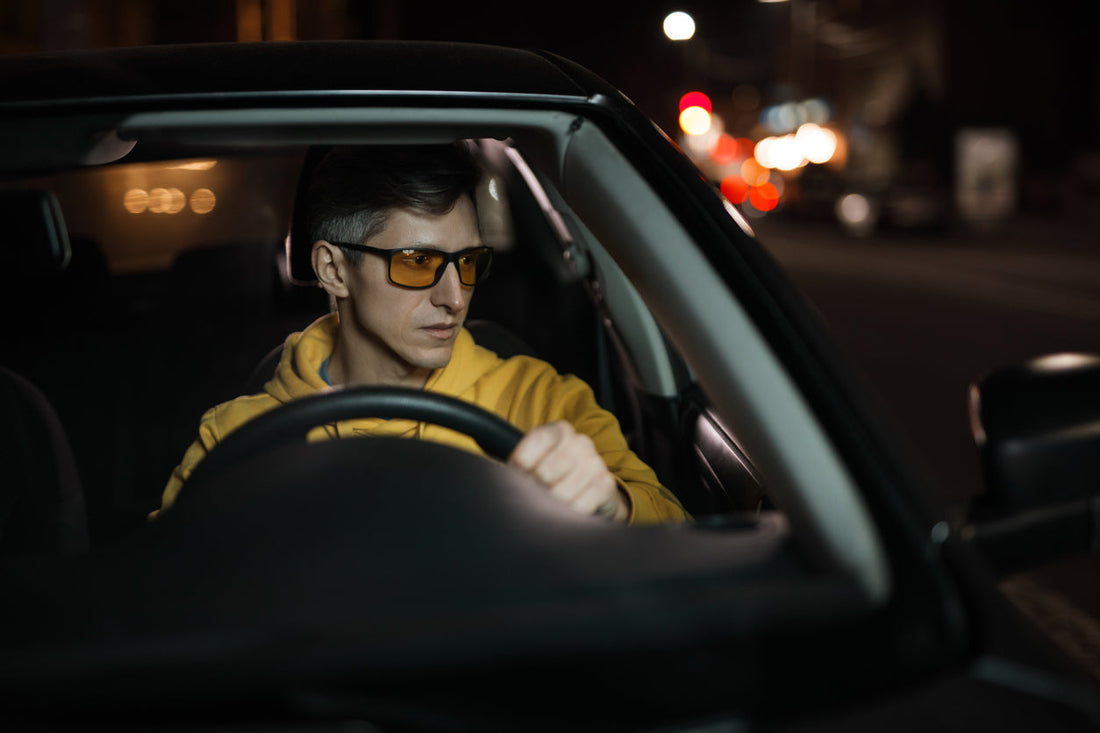Driving at night can be a challenge for many people. Oncoming headlights, glare, and poor visibility can all contribute to eye strain or even dangerous driving conditions. That’s where yellow-tinted night driving glasses come in.
These lenses are specifically designed to enhance contrast and reduce glare in low-light conditions. But are they right for you? Let’s explore who benefits most from using night driving yellow lenses and how they work.
What Are Yellow Night Driving Lenses?
Night driving yellow lenses are specialized glasses with a light yellow or amber tint. They're not true sunglasses—instead, they are designed to:
- Reduce glare from headlights and streetlights
- Improve contrast and depth perception in low-light environments
- Minimize reflections and halos around lights
- Ease eye strain and fatigue during nighttime driving
These lenses often include anti-reflective coatings and are typically made of lightweight, shatter-resistant materials for safety and comfort.
Who Benefits Most from Night Driving Glasses?
1. Drivers with Light Sensitivity
People who are especially sensitive to glare, whether from age, dry eyes, or certain eye conditions—can find night driving much more comfortable with yellow lenses.
2. Older Adults
As we age, our pupils become smaller and our eyes struggle more with glare and low-light conditions. Yellow lenses can help older drivers by improving clarity and reducing eye fatigue.
3. Professional or Frequent Drivers
Truckers, rideshare drivers, delivery workers, or anyone who spends extended time driving at night will benefit from enhanced visibility and reduced strain.
4. Rural or Dimly Lit Area Drivers
If you live or drive in areas with minimal street lighting, yellow lenses can improve your ability to see road edges, signs, and hazards more clearly.
5. People with Night Myopia
Also known as “night blindness,” this condition makes it harder to see clearly in dark environments. Yellow-tinted lenses can improve contrast, helping some individuals see better when their vision naturally worsens in the dark.
A Note on Limitations
While yellow lenses can reduce glare and improve contrast, they do not increase brightness or allow you to see in complete darkness. They also may not be suitable for everyone, especially if overused or relied on during extremely low-visibility conditions like fog or heavy rain.
Always check with an eye care professional if you have serious night vision problems.
Frequently Asked Questions (FAQ)
Q: Do yellow lenses help with night driving?
A: Yes, for many people. They help reduce headlight glare and improve contrast in low-light conditions, making driving more comfortable and less fatiguing.
Q: Are they the same as sunglasses?
A: No. Night driving glasses are lightly tinted and designed for low-light conditions. Sunglasses are much darker and are not safe to use at night.
Q: Can I wear them during the day too?
A: Some people wear yellow lenses during cloudy or rainy days to enhance contrast, but they are not meant for bright sunlight.
Q: Will they fix night blindness?
A: No. While they may help reduce symptoms like glare, they are not a cure. Anyone with night blindness should consult an eye care provider.
Q: Do they require a prescription?
A: No. Night driving yellow lenses are available over the counter.









